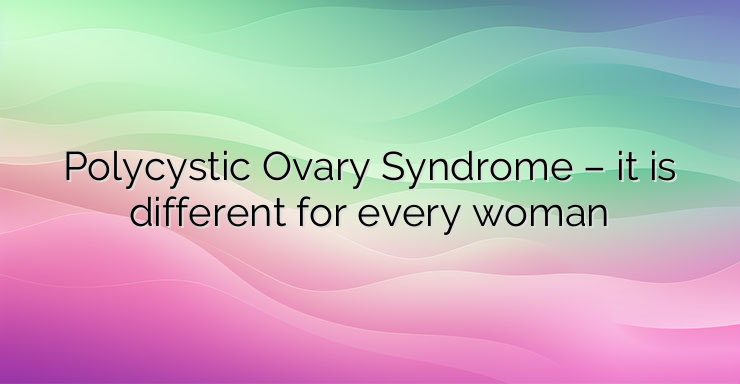Polycystic ovary syndrome (PCOS) is one of the most common endocrine disorders affecting women of reproductive age. The pathophysiological basis of the disease is still unclear. A complex involvement of several factors in the genesis of the disease is assumed, in which insulin resistance plays a key role. Metabolic syndrome is twice as common among women with PCOS compared to the general population, and their risk of developing type 2 diabetes is about 4 times higher. The clinical picture of the syndrome is variable in individual women, ranging from asymptomatic to multisystem manifestation – dermatological, gynecological or metabolic. The main clinical signs include: Signs of hyperandrogenemia – hirsutism – 70%; alopecia – 10%; acne – 30%; Menstrual disorders – 60-70%; Ultrasound signs of polycystic ovaries – found in 22-33% of asymptomatic women; Infertility – 70%; Visceral obesity – 35-50%; Acanthosis nigricans (brownish coloring of the skin in the area of the folds, an expression of insulin resistance) – 1-3%. Hirsutism is the most common sign of hyperandrogenemia. It is expressed in increased hair in androgen-dependent areas (upper lip, chin, sideburns, between the breasts, along the midline of the abdomen, waist and inner thighs). The degree of hirsutism is assessed using the Ferriman Gallwey scale. Acne is a multifactorial inflammatory disease affecting skin pilosebaceous follicles. A large part of patients with acne do not have hormonal disorders, so clarification of the hormonal status in women with acne should be done with concomitant signs of endocrine disorders. Androgenic alopecia is a diffuse thinning of hair in the centroparietal area while remaining in the frontal area. It is less often due to hyperandrogenemia alone, and basic genetic factors are involved in its genesis. Menstrual disorders are a leading symptom of polycystic ovary syndrome. These can be of the type oligomenorrhea (prolonged menstrual cycle), amenorrhea (absence of menstruation) and/or dysfunctional uterine bleeding. Their cause is ovulatory dysfunction (the inability to ovulate), which is the result of disturbed hormonal regulation of the menstrual cycle. About 70-90% of anovulatory conditions are due to polycystic ovary syndrome. This makes the disease among the most common causes of infertility. However, up to 75% of PCOS patients conceive spontaneously and their fertility is similar to that of healthy women. Abdominal obesity is associated with higher insulin resistance. It, in turn, leads to excessive production of androgens by the ovaries, occurrence of morphological changes in them (formation of a polycystic structure) and rotation of the entire vicious circle in the pathogenesis of the disease. NEWS_MORE_BOX The diagnosis of the disease is made according to the so-called Rotterdam criteria,according to which polycystic ovary syndrome is present if two of the following three criteria are present: Chronic anovulation; Clinical or biochemical signs of hyperandrogenemia; Ultrasound features of polycystic ovary syndrome. Duration of the menstrual cycle over 35 days suggests chronic anovulation. If the length of the menstrual cycle is between 32-35 days, additional clarification is required for the presence of ovulation. About 10-15% of patients with hyperandrogenemia may have chronic anovulation, even though their menstrual cycle is regular. In mature women, hirsutism, acne and alopecia are clinical signs of hyperandrogenemia, whereas in adolescent girls only hirsutism is. For a biochemical assessment of hyperandrogenemia, only a test of total testosterone is sufficient. High informative value is given by the calculated free testosterone, which is established using special calculators. The classic Rotterdam criteria strictly describe when one ovary has the typical polycystic structure characteristic of the syndrome – in the presence of at least 12 follicles with a diameter of 2-9 mm in the ovary and an increased ovarian volume > 12 ml. Assessment for polycystic ovary syndrome criteria in adolescents is reasonable at least 2 years after menarche, because of some overlap of the syndrome with some aspects of normal sexual development.


Leave a Reply